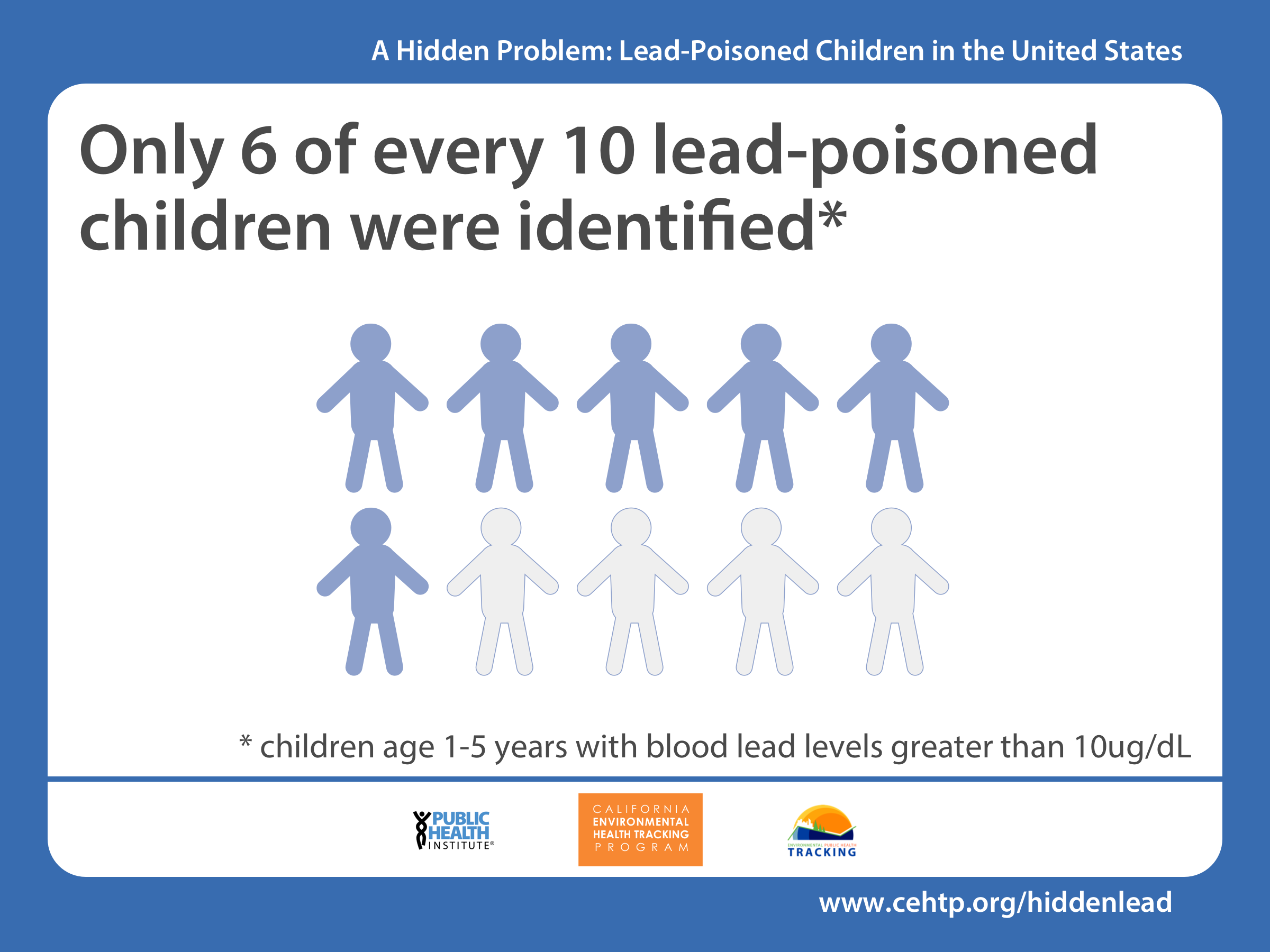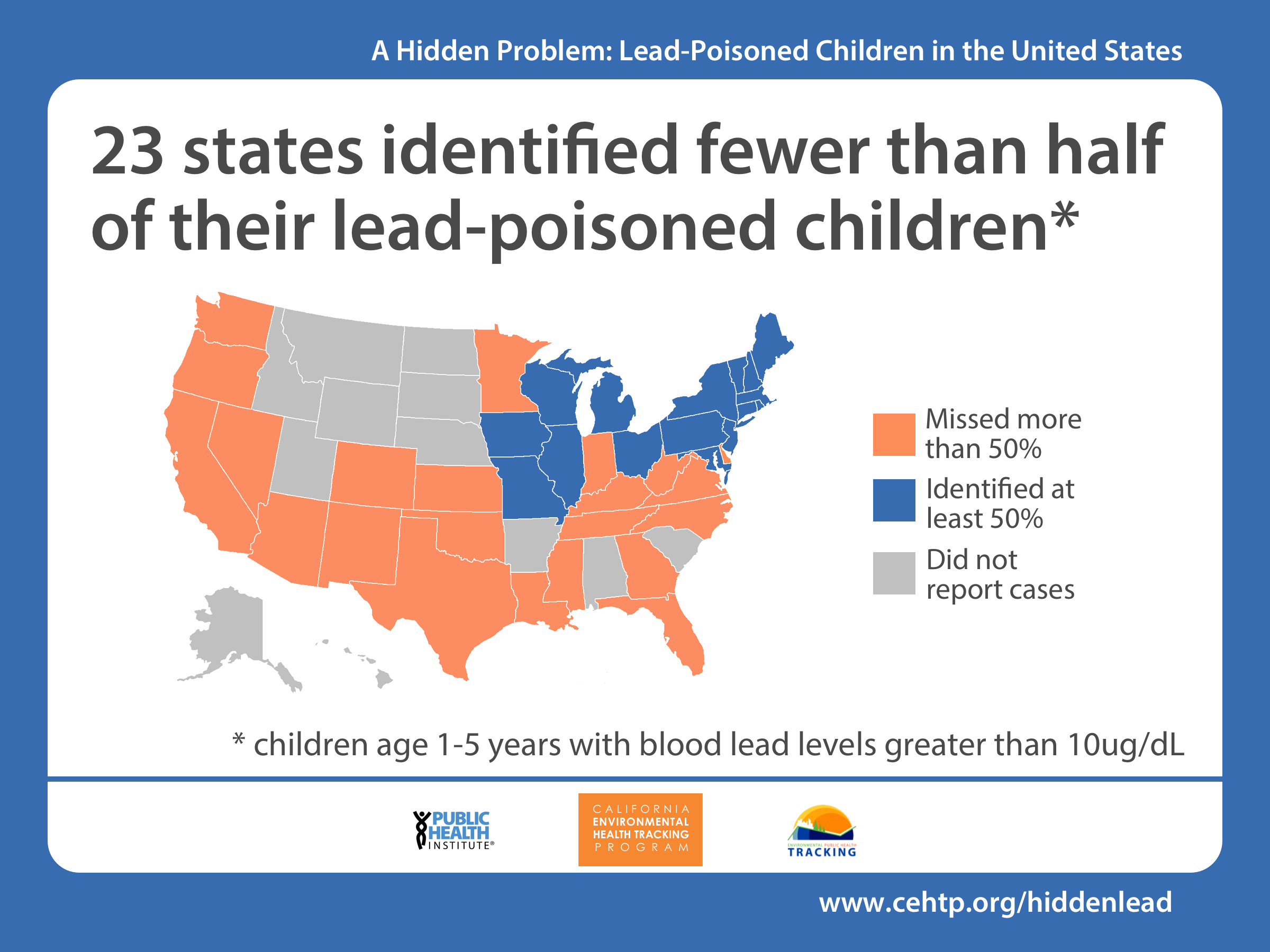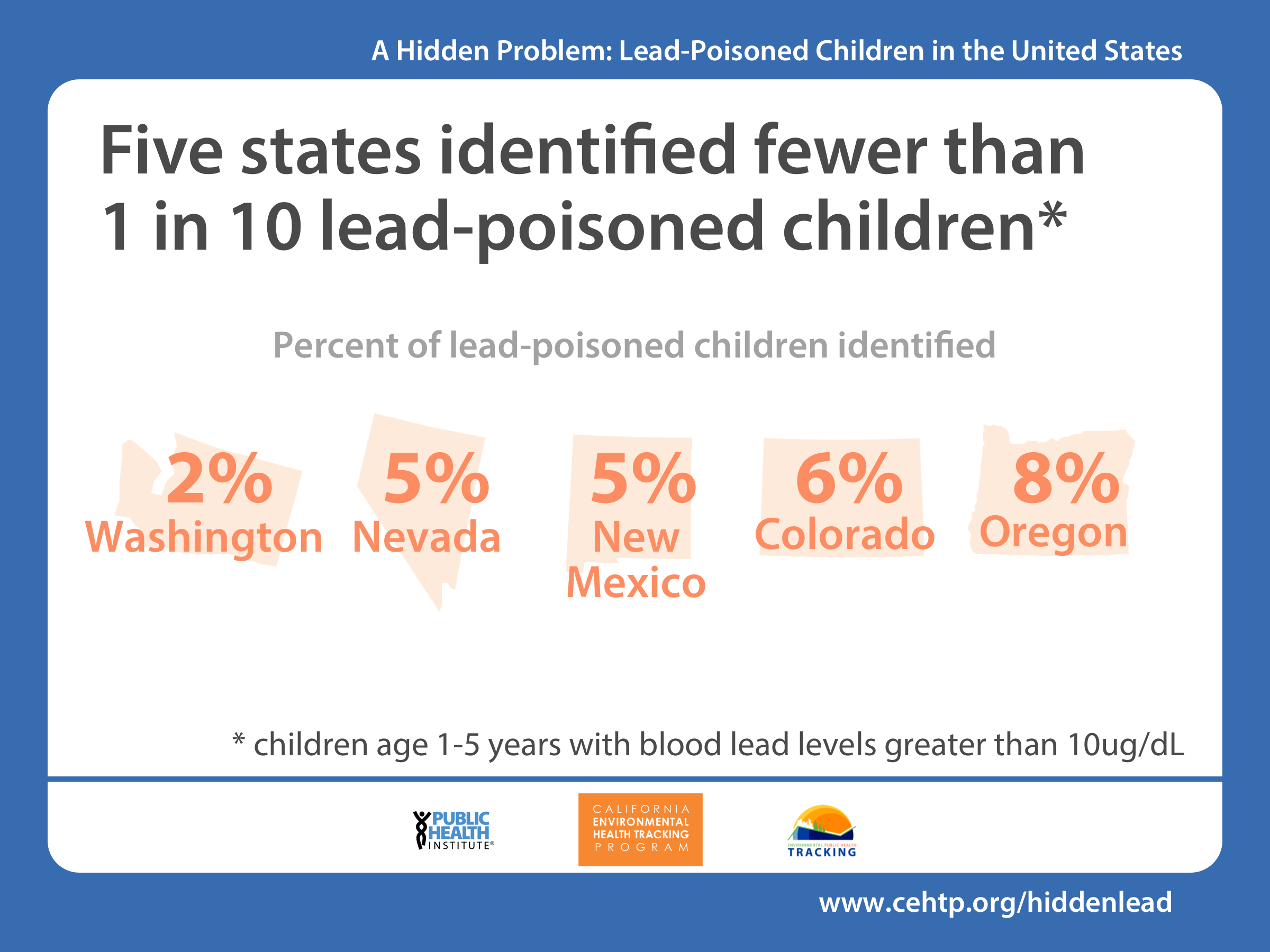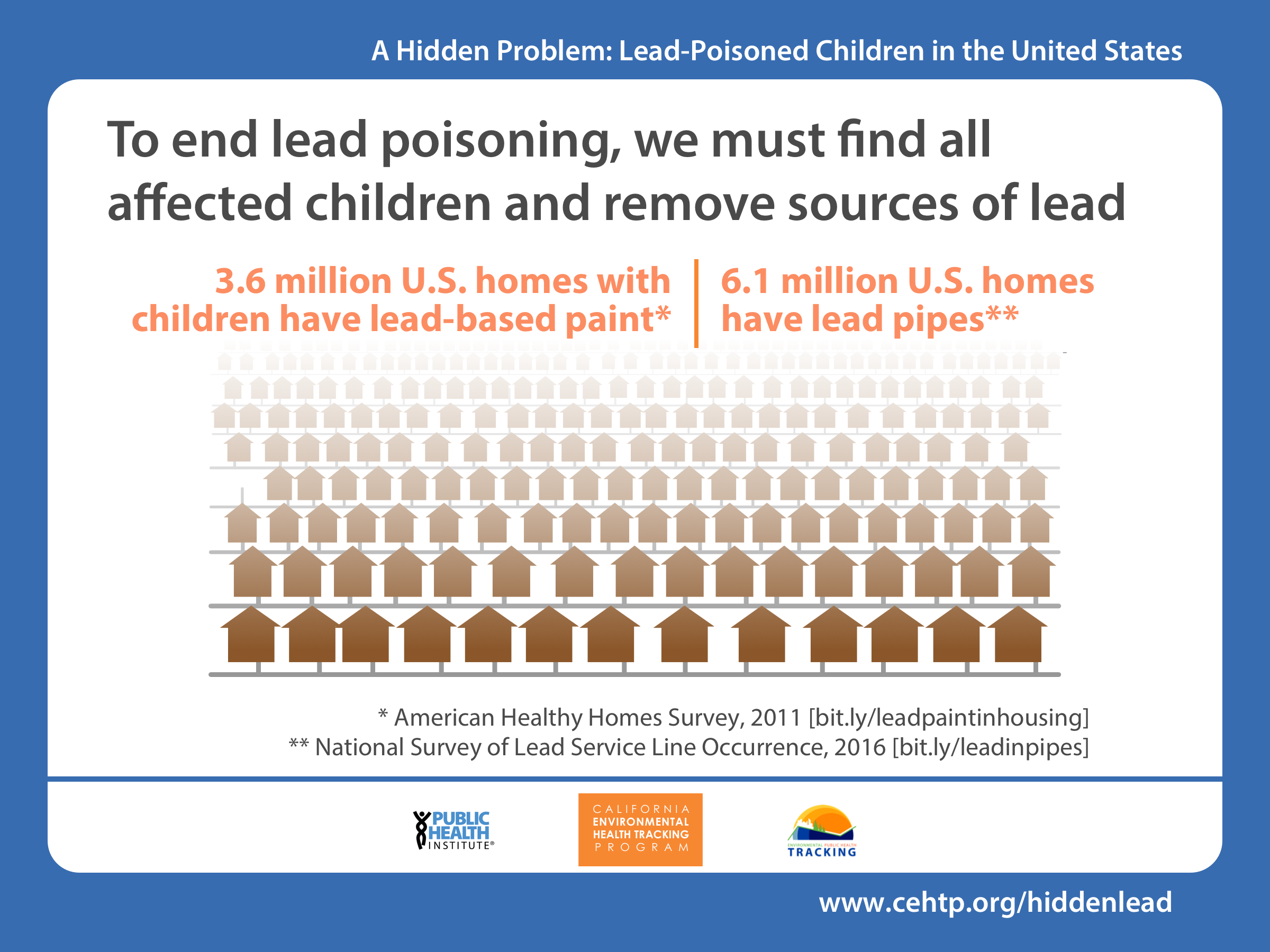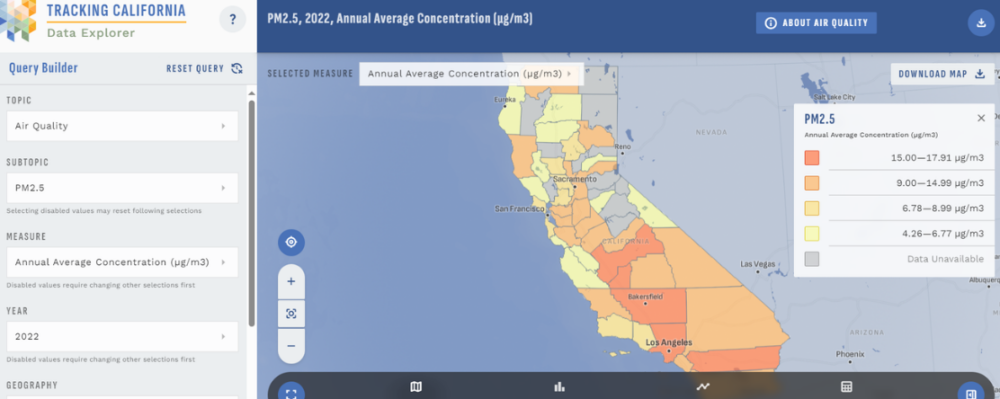
A Hidden Problem: Lead-Poisoned Children in the United States
- Eric M. Roberts, Daniel Madrigal, Jhaqueline Valle, Galatea King, Linda Kite
-
Focus Areas
Environmental Health, Health Care & Population Health -
Issues
Population Health -
Programs
Tracking California
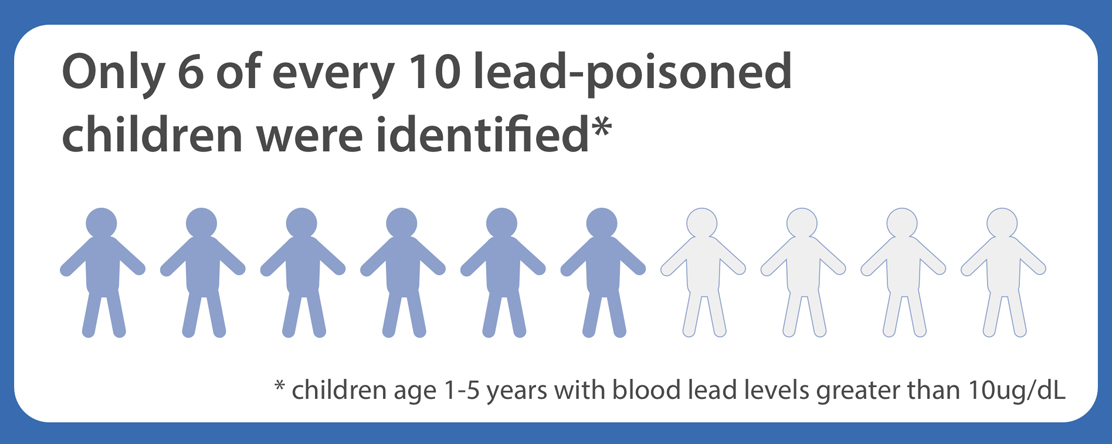
How many children in the United States suffer from lead poisoning? A new PHI study shows that the numbers of lead-poisoned children may be much higher than previously reported.
Using new analytical methods, PHI’s California Environmental Health Tracking Program estimated that during 1999 – 2010, most states may have missed more than half of their lead-poisoned children, finding only 2 out of every 3 children poisoned by lead.
The study found states where more than 80% of lead-poisoned children could remain unidentified—and researchers expect that testing rates have only declined in the subsequent years. The findings suggest that recent lead poisoning estimates that are based solely on clinical data are too low, and that without swift and decisive action, many lead-poisoned children will remain undiagnosed.
Learn more in a new infographic and help spread the word with a tweet:
- Lead poisoning is a hidden problem: In the US, 1 out of every 3 lead-poisoned kids was not identified: http://bit.ly/2pwW27s @phidotorg
- How many lead-poisoned children are living in your state? See new data + interactive maps from @phidotorg’s CEHTP: www.cehtp.org/hiddenlead
- New study via @phidotorg’s CEHTP finds that 23 states identified fewer than 1/2 of their lead-poisoned children http://bit.ly/2pwW27s

|
|
|
|
|
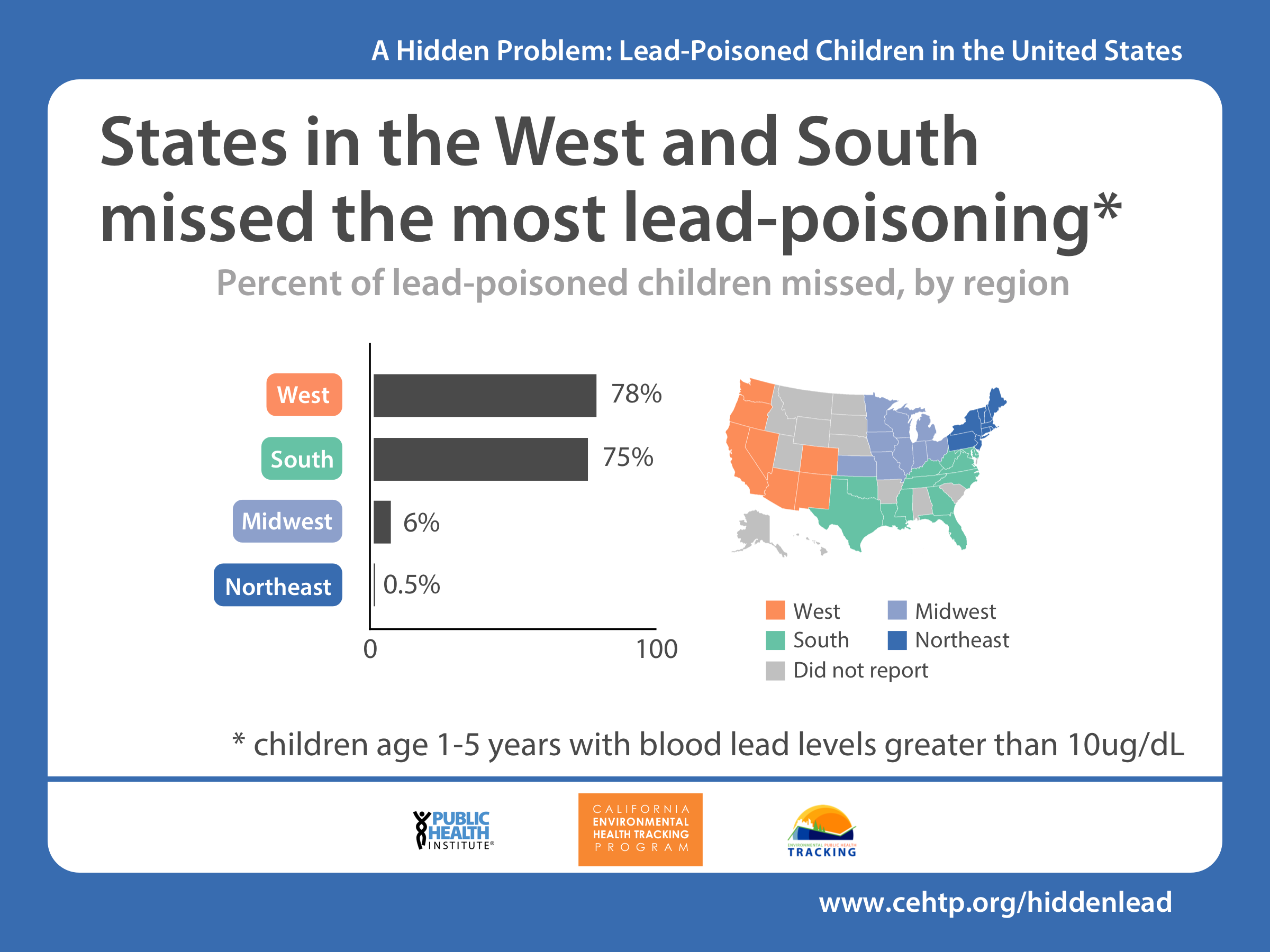
|
|
Related Resources
- Explore the study findings using interactive maps from PHI’s California Environmental Health Tracking Program at http://cehtp.org/hiddenlead.
- See the press release.
- Read the full study in Pediatrics: “Assessing Child Lead Poisoning Case Ascertainment in the US, 1999-2010”
Work With Us
You change the world. We do the rest. Explore fiscal sponsorship at PHI.
Support Us
Together, we can accelerate our response to public health’s most critical issues.
Find Employment
Begin your career at the Public Health Institute.
